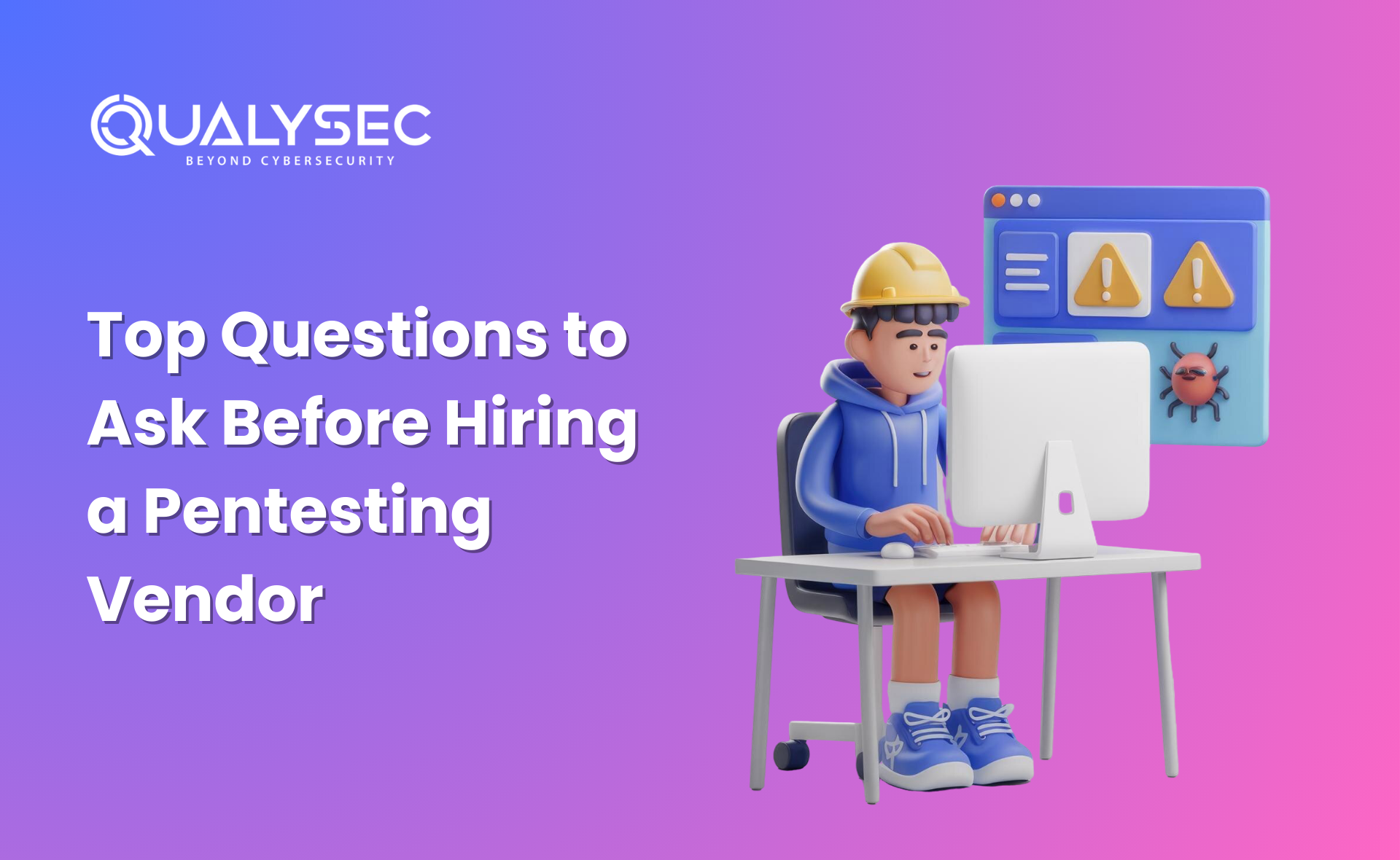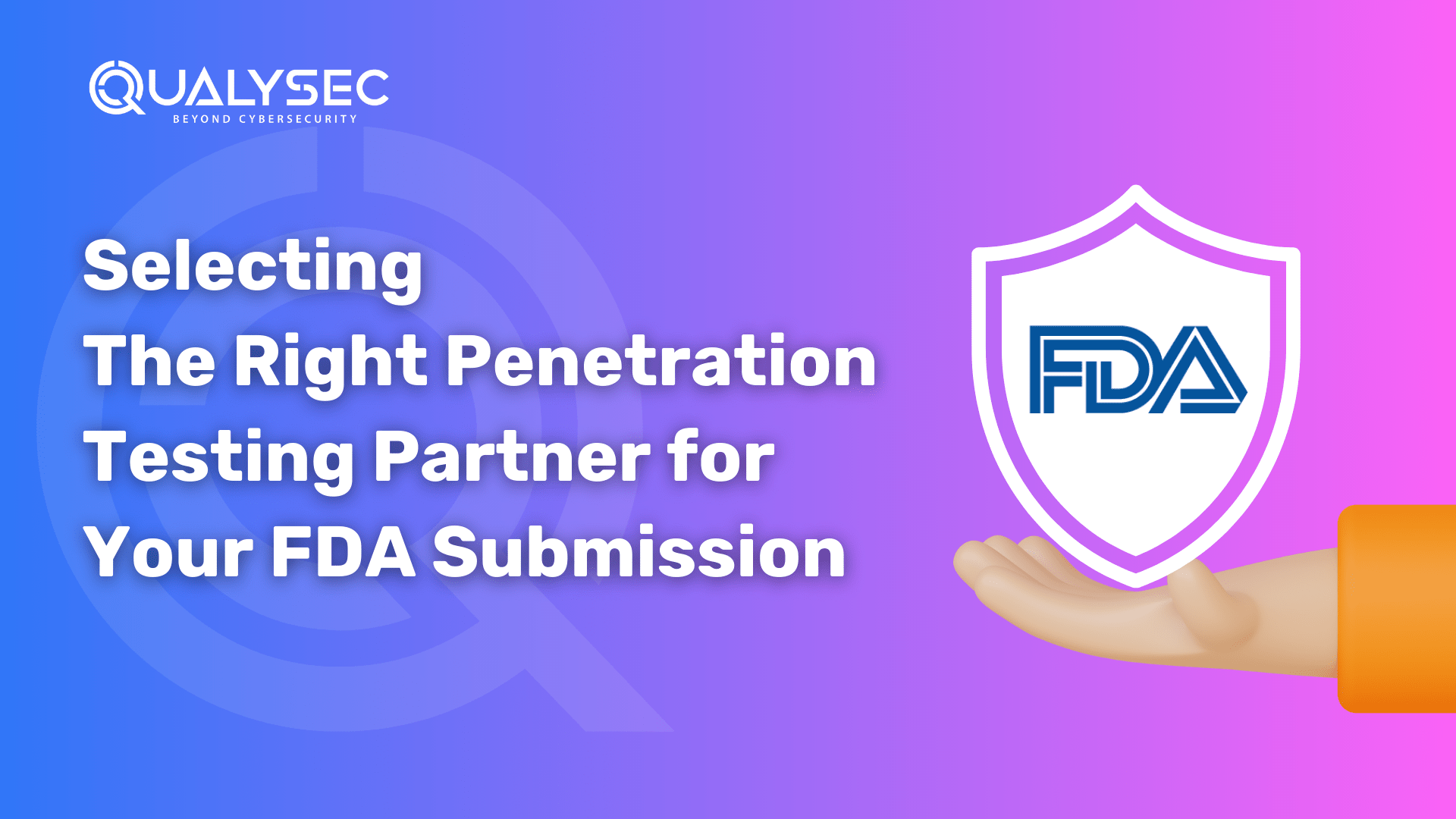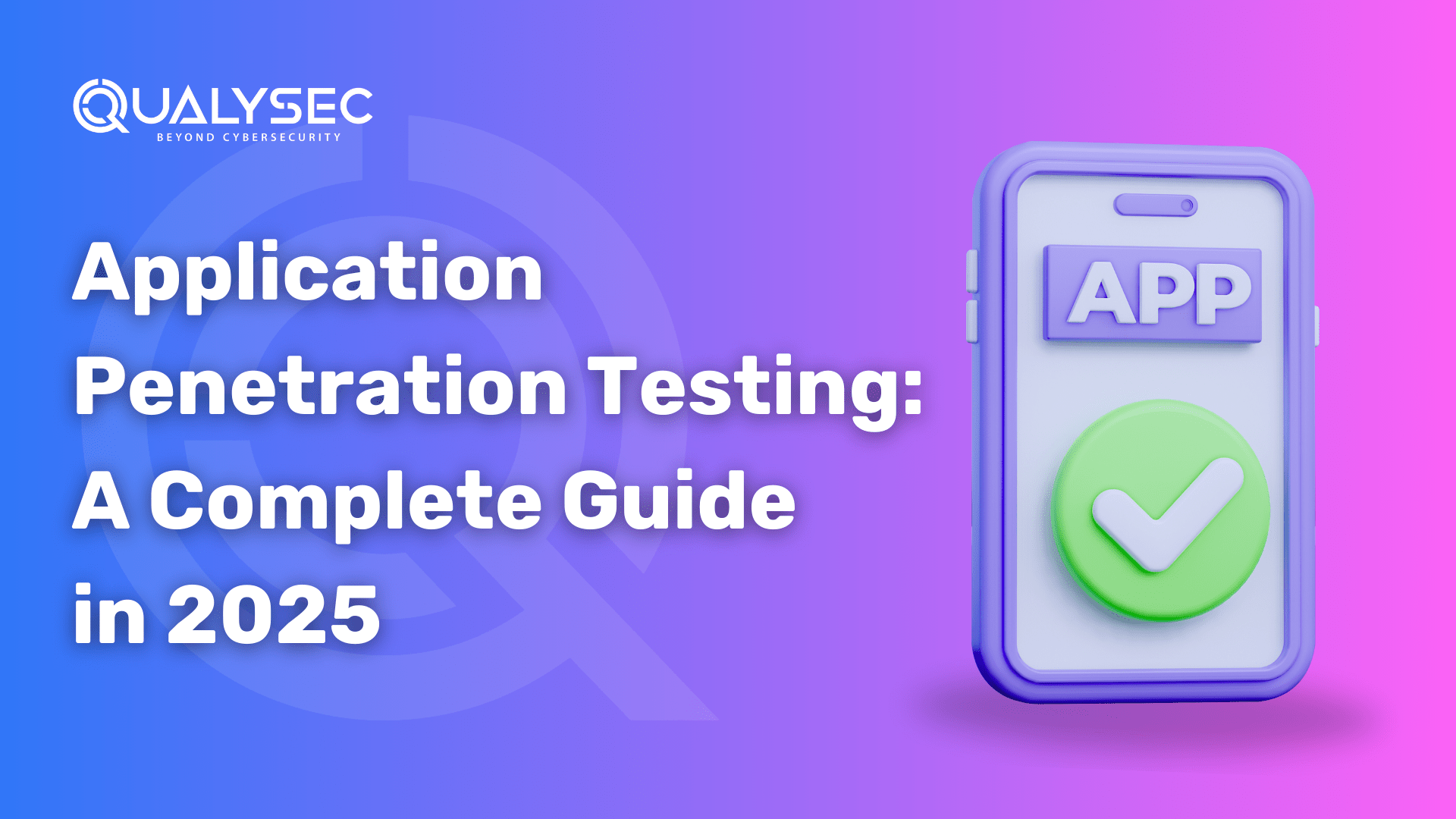 Blog Speed Optimization – Make Google & Users Happy!
Blog Speed Optimization – Make Google & Users Happy!
Web Application Penetration Testing: A Comprehensive Guide in 2025
Written by Qualysec Technologies » Updated on: May 26th, 2025

Web applications remain a cornerstone of modern business operations, enabling critical functionalities and services for users. However, their exposure to the internet makes them prime targets for cyberattacks. Web application penetration testing continues to be a vital process for identifying vulnerabilities, ensuring robust security, and safeguarding sensitive data. This updated guide incorporates the latest advancements and practices in 2025 while retaining the foundational knowledge from previous years.
What is Web Application Penetration Testing?
Web application penetration testing, often called web app pen testing, is a systematic process of evaluating the security of a web application by simulating real-world attacks. The goal is to uncover vulnerabilities, weaknesses, and misconfigurations that malicious actors could exploit to compromise the application or its infrastructure.
Key Aspects of Web App Penetration Testing in 2025:
Scoping: Define the scope of the test, including target applications, functionalities, and potential entry points. In 2025, scoping has become more dynamic, often incorporating AI-driven tools to identify high-risk areas.
Reconnaissance: Gather information about the target, such as technologies used, architecture, and potential attack vectors. Advanced reconnaissance now includes analyzing AI/ML-driven components and API ecosystems.
Vulnerability Assessment: Identify security weaknesses like SQL injection, cross-site scripting (XSS), insecure APIs, and misconfigurations. In 2025, vulnerabilities in AI/ML models and serverless architectures are also prioritized.
Exploitation: Safely exploit vulnerabilities to assess their impact and validate their existence. Modern exploitation techniques now account for zero-day vulnerabilities and advanced persistent threats (APTs).
Reporting: Document findings, risks, and remediation steps in a comprehensive report. Reports in 2025 often include interactive dashboards and AI-generated remediation recommendations.
Explore our Vulnerability Assessment Services here!
Importance of Web Application Penetration Testing in 2025
Web app penetration testing remains critical for several reasons:
Security Assurance: Ensures web applications are developed and maintained with security in mind, reducing the risk of data breaches and cyberattacks.
Compliance: Mandated by regulations like PCI DSS, GDPR, and newer frameworks like the Global Cybersecurity Compliance Act (GCCA) introduced in 2024.
Risk Mitigation: Proactively identifying vulnerabilities minimizes financial and reputational damage from attacks.
Continuous Improvement: Provides actionable insights to enhance the security posture of web applications over time.
AI and Automation Integration: With the rise of AI-driven applications, penetration testing now includes evaluating AI model security and ensuring ethical AI usage.
Preparation for Web Application Penetration Testing in 2025
Preparation remains a cornerstone of effective penetration testing. Here’s how the process has evolved:
1. Defining the Scope of the Test
Scope Definition: Clearly outline objectives, target applications, and testing depth (black-box, gray-box, or white-box). In 2025, scoping often includes AI-driven risk assessment tools to prioritize high-impact areas.
Legal and Ethical Considerations: Ensure compliance with updated laws like the Cybersecurity Transparency Act (CTA) and ethical guidelines for AI testing.
2. Gathering Information About the Web Application
Reconnaissance: Use advanced tools to identify technologies, APIs, and AI/ML components. In 2025, reconnaissance includes analyzing serverless architectures and edge computing setups.
Vulnerability Scanning: Leverage AI-powered scanners to detect vulnerabilities in real-time, including those in AI models and APIs.
“Related Content : Read our guide to What Is Vulnerability Scanning in Cyber Security?”
3. Obtaining Necessary Permissions and Approvals
Legal Authorization: Secure written approval from stakeholders, ensuring compliance with global and regional cybersecurity laws.
Communication: Establish clear communication channels and incident response protocols, especially for AI-driven applications.
4. Assembling the Testing Team
Skillset: Include experts in AI/ML security, API testing, and cloud-native architectures.
Tools and Resources: Equip the team with advanced tools like AI-driven penetration testing platforms and cloud security assessment tools.
Process of Web Application Penetration Testing in 2025
The testing process has evolved to address modern threats and technologies:
1. Identifying Vulnerabilities
Manual Testing: Simulate real-world attacks, focusing on AI/ML model vulnerabilities, API security, and serverless architectures.
Automated Scanning: Use AI-driven tools to detect vulnerabilities in real-time, including zero-day threats.
2. Exploiting Vulnerabilities
Controlled Exploitation: Safely exploit vulnerabilities, ensuring no disruption to live systems. In 2025, this includes testing AI model robustness and API integrity.
Impact Assessment: Evaluate the potential impact on data confidentiality, integrity, and availability, considering AI-driven decision-making processes.
3. Documenting Findings
Comprehensive Documentation: Record vulnerabilities with detailed technical descriptions, visual evidence, and AI-generated risk assessments.
Risk Assessment: Use updated CVSS v4.0 for scoring vulnerabilities, incorporating AI-specific risk factors.
4. Reporting Results
Formal Report: Include an executive summary, technical findings, and AI-driven remediation recommendations.
Prioritization: Highlight critical vulnerabilities, especially those in AI/ML models and APIs.
Download a sample pen test report here!
5. Remediation Recommendations
Provide actionable steps for fixing vulnerabilities, including code fixes, configuration changes, and AI model retraining.
6. Ongoing Support
Collaborate with development teams to validate fixes and retest applications, ensuring long-term security.
Note: IndiBlogHub features both user-submitted and editorial content. We do not verify third-party contributions. Read our Disclaimer and Privacy Policyfor details.
Copyright © 2019-2025 IndiBlogHub.com. All rights reserved. Hosted on DigitalOcean for fast, reliable performance.
















